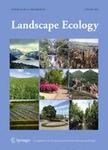版权所有:内蒙古大学图书馆 技术提供:维普资讯• 智图
内蒙古自治区呼和浩特市赛罕区大学西街235号 邮编: 010021

作者机构:Univ Alberta Dept Renewable Resources Edmonton AB T6G 2H1 Canada Univ Laval Dept Sci Bois & Foret Fac Foresterie & Geomat Quebec City PQ G1V 0A6 Canada
出 版 物:《LANDSCAPE ECOLOGY》 (园林生态学)
年 卷 期:2009年第24卷第2期
页 面:229-241页
核心收录:
学科分类:08[工学] 0708[理学-地球物理学] 09[农学] 0705[理学-地理学] 0902[农学-园艺学] 0713[理学-生态学] 0834[工学-风景园林学(可授工学、农学学位)]
基 金:Boreal Ecology and Economics Synthesis Team (BEEST) Sustainable Forest Management Network
主 题:Harvesting Forest fragmentation Landscape configuration Landscape pattern metrics Landscape dynamics Boreal forest
摘 要:Habitat configuration has important implications for the persistence of faunal and floral populations at a variety of spatial scales. Forest harvesting alters habitat configurations. However, measuring and predicting such alterations remains challenging, in part because previously developed metrics of habitat configuration are often not statistically independent of habitat amount. Thus, their ability to measure independent effects of habitat configurations and habitat amount on ecosystem components such as wildlife populations has been limited. Here, we evaluate habitat configuration based on newly developed metrics that are independent of habitat amount but do not depend on regression residuals of abundance and configuration relationships on any population of landscapes. We use these new metrics to measure and predict changes in habitat configuration following forest harvesting in the boreal forest of Alberta, Canada. Our findings clearly demonstrate changes in habitat configuration resulting from forest harvesting can be predicted precisely with information about initial habitat patch structure and harvesting patterns. Because forest harvesting has significant implications for habitat configuration, accurately predicting these changes is critical for determining if forest harvesting strategies are sustainable for ecosystem components and processes. This study provides a set of novel, robust metrics for tracking landscape-scale changes in habitat configuration in harvested boreal forests.